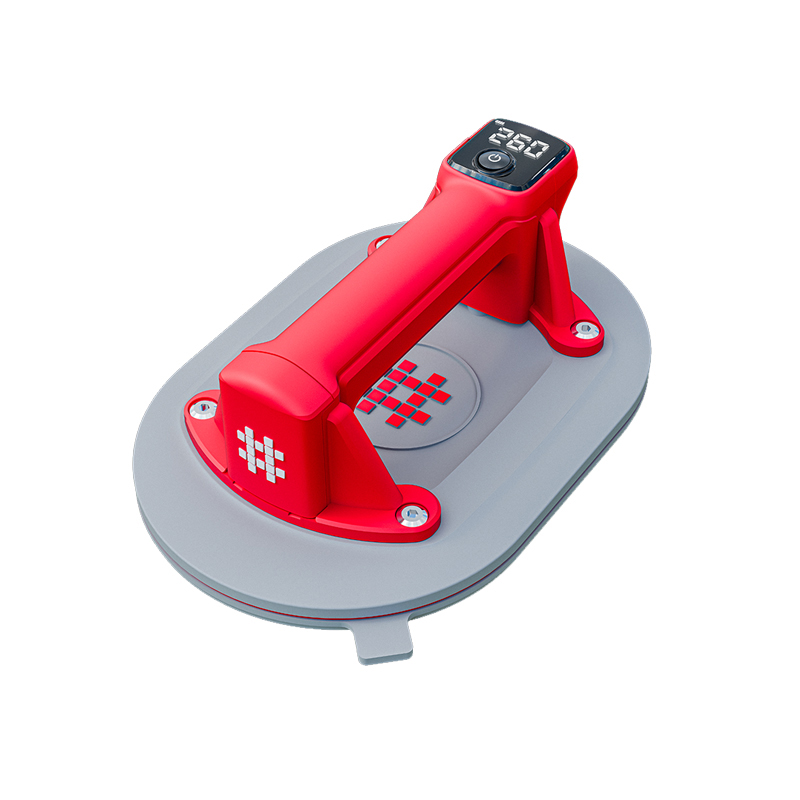You can learn the recent information of Shijing.

In the ever-evolving world of material handling, a seemingly simple yet revolutionary technology has been quietly transforming the way industries approach their operations. Vacuum suction cups, once considered a niche tool, have now emerged as a game-changer, redefining the landscape of material handling across a wide range of sectors.
At the heart of this transformation lies the inherent versatility and efficiency of vacuum suction cups. These unassuming devices, powered by the principles of atmospheric pressure, have the ability to grip, lift, and manipulate a diverse array of materials with remarkable precision and ease. From delicate electronic components to heavy industrial parts, vacuum suction cups have proven their mettle in tackling the more demanding material handling challenges.
One of the primary advantages of vacuum suction cups lies in their ability to handle materials without the need for physical contact. This noncontact approach is particularly beneficial in industries where the slightest damage or contamination can have costly consequences. In the electronics industry, for instance, vacuum suction cups have become indispensable for the handling of sensitive circuit boards, displays, and other fragile components. By eliminating the risk of scratches, fingerprints, or other surface imperfections, these cups have helped manufacturers maintain higher standards of quality and productivity.
Moreover, the versatility of vacuum suction cups extends far beyond the electronics sector. In the automotive industry, these cups are used to lift and position heavy body panels, windshields, and other large components with remarkable precision, ensuring a seamless assembly process. Similarly, in the glass and ceramics industries, vacuum suction cups are employed to handle delicate materials, such as mirrors, windows, and tiles, with unparalleled care and efficiency.
The adaptability of vacuum suction cups is further highlighted in the logistics and warehousing sectors. As e-commerce continues to drive the demand for faster and more efficient order fulfillment, these cups have become essential tools for the automated handling and sorting of a wide range of products, from fragile glassware to bulky furniture. By integrating vacuum suction cups into robotic systems and automated material handling equipment, logistics providers have been able to streamline their operations, reduce labor costs, and improve overall productivity.
One of the key factors contributing to the growing popularity of vacuum suction cups is their ability to handle a diverse range of materials. Unlike traditional mechanical grippers or clamps, which may be limited to specific shapes or surface textures, vacuum suction cups can effectively grip a wide variety of materials, including smooth, porous, or even curved surfaces. This versatility has allowed manufacturers and logistics providers to optimize their material handling processes, reducing the need for specialized equipment and increasing operational flexibility.
Furthermore, the advancements in vacuum suction cup technology have further enhanced their capabilities. Intelligent control systems, integrated sensors, and advanced materials have all played a role in improving the precision, reliability, and durability of these cups. Manufacturers can now fine-tune the suction force, adjust the cup size and shape, and even incorporate features like anti-slip coatings to ensure a secure and reliable grip, even in challenging environments.
As the demand for efficient and sustainable material handling solutions continues to grow, vacuum suction cups are poised to play an increasingly pivotal role. Their ability to handle a wide range of materials, reduce the risk of damage, and improve overall productivity has made them an indispensable tool in the modern industrial landscape.
Moreover, the environmental benefits of vacuum suction cups cannot be overlooked. By eliminating the need for traditional mechanical grippers or clamps, which often require complex and energy-intensive systems, vacuum suction cups offer a more sustainable and eco-friendly alternative. Their low-energy operation and maintenance requirements contribute to a smaller carbon footprint, aligning with the growing emphasis on sustainable manufacturing and logistics practices.
In conclusion, the rise of vacuum suction cups in material handling is a testament to the power of and the relentless pursuit of efficiency. These unassuming devices have transcended their initial niche applications and have become essential components in a wide range of industries, redefining the way materials are handled, transported, and assembled. As technology continues to advance and the demand for sustainable and adaptable material handling solutions grows, the impact of vacuum suction cups is poised to become even more profound, shaping the future of manufacturing, logistics, and beyond.
 English
English 中文简体
中文简体 русский
русский Español
Español Deutsch
Deutsch


.jpg)

.jpg)
.jpg)



-2.jpg)
.jpg)
-3.jpg)
-5.jpg)
.jpg)



.jpg)
.jpg)






